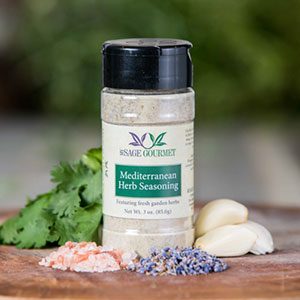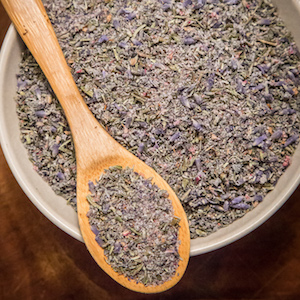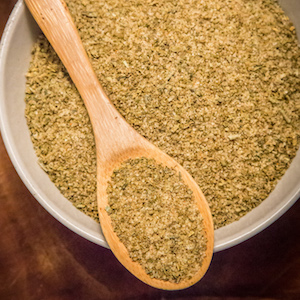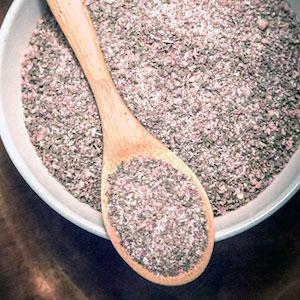Great Post-workout or anytime
Easy Breakfast Hash
Ingredients
Instructions
Recommended Products
Nutrition Information:
Yield: 4
Serving Size: 1
Amount Per Serving:
Calories: 216Total Fat: 16gSaturated Fat: 6gTrans Fat: 0gUnsaturated Fat: 9gCholesterol: 110mgSodium: 156mgCarbohydrates: 15gFiber: 7gSugar: 4gProtein: 7g
Tag Archive for: My Sage Gourmet
Delicious and nutritious anytime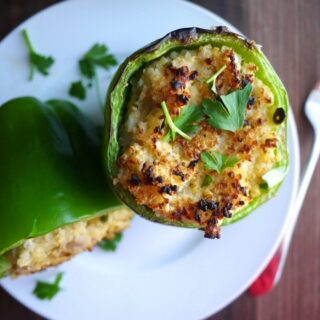
Asparagus and Mushroom Stuffed Bell Peppers
Ingredients
Instructions
Recommended Products
Nutrition Information:
Yield: 4
Serving Size: 1
Amount Per Serving:
Calories: 163Total Fat: 10gSaturated Fat: 4gTrans Fat: 0gUnsaturated Fat: 5gCholesterol: 132mgSodium: 180mgCarbohydrates: 8gFiber: 3gSugar: 3gProtein: 12g
A new study—the first of its kind—explains how even moderate intake of fruit, vegetables and legumes may lower a person’s risk of heart disease and death.
This is good news for those who think they can’t afford to get the recommended amount of fruits, veggies and legumes every day.
“Previous research, and many dietary guidelines in North America and Europe recommended daily intake of these foods ranging from 400 to 800 grams per day. This is unaffordable for many people in low to middle-income countries,” said study investigator Dr Andrew Mente, PhD, from the Population Health Research Institute, McMaster University, Hamilton, Canada. “Our findings indicate that optimal health benefits can be achieved with a more modest level of consumption, an approach that is likely to be much more affordable.”
Researchers looked at the diets of those living in 18 countries and across seven geographic regions. They concluded people eating 3 to 4 servings per day of fruits, vegetables and legumes was just as beneficial on their health as those with higher intakes. USDA Dietary Guidelines recommend adults eat anywhere from 5 to 13 servings.
Although this was a study done across multiple countries with various types of diets, Mente believes this data could help sway nutrition policies universally.
Author: Jenny Ivy
Courtesy of Delicious Living and The New Hope Network
DISCLAIMER–The views and opinions expressed here are based solely on personal experience, research and my interactions other professionals in the field of health and wellness. This article is not a diagnose, or medically based advise. Your experiences and sentiments may differ from my own. If you are suffering from any serious medical condition, you should consult your doctor or naturopath for a diagnosis.
This recipe is being shared courtesy of Delicious Living Many thanks to the recipe author Jane Burnett,RD. Photo credit to Jennifer Olson/Delicious Living Please visit the Delicious Living Blog today.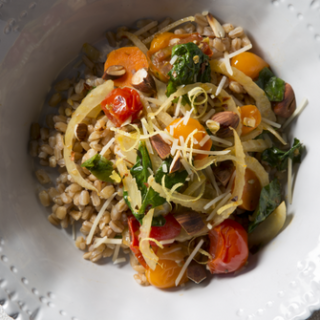
Italian Herbed Farro Bowls
Ingredients
Instructions
Notes
Nutrition Information:
Yield: 6
Serving Size: 1
Amount Per Serving:
Calories: 498Total Fat: 15gSaturated Fat: 2gTrans Fat: 0gUnsaturated Fat: 11gCholesterol: 2mgSodium: 372mgCarbohydrates: 74gFiber: 13gSugar: 15gProtein: 17g
How could having Inflammation be good news
Inflammation is the body’s normal response to injuries or infections. The good news about inflammation is that if you are experiencing it, your body is providing you valuable intel of a problem and at the same time, working on a solution. Thats is pretty amazing when you think about it. At the very least, this is your early warning sign of a bigger condition, so act now! Some forms of inflammation can be protective such as a swelling of a sprained ankle to protect the bone. Other forms such as chronic inflammation can be progressive, severe, and play a role in chronic diseases and conditions.
More Good News about Inflammation
If you have been diagnosed with an inflammatory based condition, the other good news, changes to your eating habits may profoundly benefit you.
Many types of inflammation can affect us long-term but we can help to minimize inflammation within the body with our diet.
What to Eat
“”Eat food, not too much, mostly plants.” –Michael Pollan. If we can begin here, in the garden, in the kitchen and at our family table, we are definitely headed in the best direction for health and well-being.
Let’s dive a little deeper
In general, foods that are nutrient dense and contain antioxidants can help reduce inflammation. Anti-inflammatory foods are those that many experts encourage us to eat. They include oodles of fruits and vegetables, whole grains, plant-based proteins, including beans, legumes nuts, fatty fish, and fresh herbs and spices. Now, let’s take a closer look.
Fruits and Veggies: The darker, more vibrant colors the better- Research tells us that vitamin K-rich leafy greens like spinach, lose leaf lettuce, broccoli and kale reduce inflammation. Cabbage, especially in a fermented state (think sauerkraut), is a valuable fighter of inflammation. Additionally, berries and stone fruits contain antioxidant properties, which are substances that prevent or delay some types of cell damage, and can reduce inflammation.
Whole Grains: Oatmeal, brown rice, whole-wheat bread, and other unrefined grains are high in fiber, and that fiber thwarts inflammation.
Beans: They are high in fiber, loaded with antioxidants and other anti-inflammatory substances. Simple as that! Worried about the gassy affects? Try adding a piece of seaweed into the pot while cooking to reduce that gas.
Nuts: Healthy nuts are chock full of the polyunsaturated and monounsaturated fats and do not contain many unhealthy saturated fat. As a result, nuts have major anti-inflammatory effects. Specifically and in small quantities,raw, unsalted almonds, walnuts, pecans, pistachios, brazil nuts, cashews and hazelnuts
Fish: Put it on your plate at least twice a week. Salmon, tuna, and sardines all have plenty of omega-3 fatty acids, which fight inflammation. If you are eating canned tuna, I suggest sticking with Safe Catch Tuna.
Herbs and spices: Numerous studies show the impact herbs and spices have on inflammation. The findings are promising. Add these to your diet- Ginger, Rosemary, marjoram, oregano, sage, cayenne, cinnamon and cloves.
Green Tea: There is no lack of evidence on the positive effects of green tea. My suggestion, look for an organic blend/brand. With so many good choices, this is not the place to cut corners.
Dark Chocolate: This one makes me especially giddy! A study at Louisiana State University found that gut microbes in our stomach ferment chocolate into heart-healthy, anti-inflammatory compounds that shut down genes linked to insulin resistance and inflammation. To bump up the benefits , pair dark chocolate with apple slices to speed up the probiotic fermentation process. This will lead to an even greater reduction in inflammation. Quality is king here- so make certain the cacao is at least 70 percent or above.
The Bottom Line
Have Love and Respect for your body- it is the only one you have in this life. Support your body by putting into it fuel and medicine in the form of good clean food.
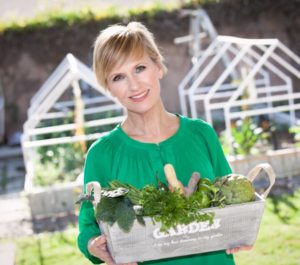 Set up your Kitchen Coaching session Today:
Set up your Kitchen Coaching session Today:
Want to learn more? Drop me a line or give me a call. I am happy to meet with you to discuss your best solutions.
DISCLAIMER–The views and opinions expressed here are based solely on personal experience, research and my interactions other professionals in the field of health and wellness. This article is not a diagnose, or medically based advise. Your experiences and sentiments may differ from my own. If you are suffering from any serious medical condition, you should consult your doctor or naturopath for a diagnosis.

